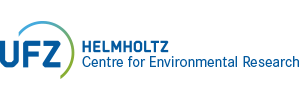Publication Details |
| Category | Text Publication |
| Reference Category | Journals |
| DOI | 10.3390/atmos11101113 |
Licence  |
|
| Title (Primary) | Hygienic condition of different water sources in the Kharaa River Basin, Mongolia in the light of a rapid warming trend |
| Author | Ochirbold, B-E.; Tserendorj, A.; Westphal, K.; Karthe, D. |
| Source Titel | Atmosphere |
| Year | 2020 |
| Department | ASAM |
| Volume | 11 |
| Issue | 10 |
| Page From | art. 1113 |
| Language | englisch |
| Keywords | water; hygiene; total coliforms; fecal coliforms; climate change; warming; strong rainfall events |
| Abstract | Mongolia is a water-scarce land-locked country, and available water resources are utilized for multiple purposes including irrigation, food preparation, drinking water for livestock and people. Limited data availability on water hygiene means that the related risks to public health are only partially understood. This is particularly problematic due to the widespread use of unimproved water sources such as surface water and water from simple shallow wells. Based on two field surveys in the Kharaa River Basin in spring 2017 and 2018, we assessed the presence and quantity of total coliforms (TC), fecal coliforms (FC), and E. coli bacteria in surface waters and wells and investigated potential linkages between temperature and hygiene. In the Kharaa River and its tributaries, TC concentrations averaged at a most probable number of (MPN) of 754 ± 761 per 100 mL and FC concentrations at an MPN of 31 ± 33. Only small and non-significant correlations between coliform concentrations and temperature were identified. Coliforms concentrations in wells were lower (average MPN for TC: 550 ± 1286, and for FC 58 ± 253). There was considerable variation between wells, with moderate but significant correlations between temperature and bacterial counts. Low water temperatures in April and May (just above freezing to less than 6.5 °C in wells and 7.5 °C to 14.5 °C in the river system) and the positive correlations between temperature and coliform concentrations particularly for well samples indicate that further warming is likely to increase the risks of microbiological water pollution. In the future, this should be complemented by modeling at a watershed scale. This should include the consideration of a trend towards stronger rainfall events, changes in livestock density, and urban sewage treatment and discharge, which are other likely drivers of changes in water hygiene. |
| Persistent UFZ Identifier | https://www.ufz.de/index.php?en=20939&ufzPublicationIdentifier=23731 |
| Ochirbold, B-E., Tserendorj, A., Westphal, K., Karthe, D. (2020): Hygienic condition of different water sources in the Kharaa River Basin, Mongolia in the light of a rapid warming trend Atmosphere 11 (10), art. 1113 10.3390/atmos11101113 |
|
